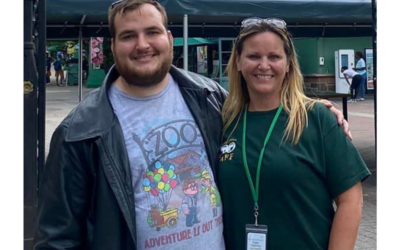Last week, we spent the week with over 150 Zoo and Aquarium Directors and other industry leaders. After two days of listening to topical trends, fascinating findings, and the latest learnings, what did we hear? Not everyone likes zoos and aquariums. AZA’s signature conservation program brand has lots of legs…or fins…and even more colors. Changing prices could bring you $3 million. Directors aren’t sure who will fill their shoes – a men’s size 10 loafer or a woman’s size 7 wedge.
First we watched a movie – The “Zoo Revolution” documentary presented some compelling footage and varied perspectives on zoos’ and aquariums’ missions and approaches to conservation and education, but we wanted it to go farther—we would like to have seen examples of the “next generation” of innovation in zoo exhibits, like what’s happening in Philadelphia, Jacksonville, and many other places. And while we applaud the filmmaker’s work in presenting a balanced and nuanced perspective on the value of zoos/aquariums, we were left wanting something more, a conclusion and evidence that we’re on the right track.
Then we dove deep – The report out on the Ocean Project’s 15-year study on public opinion research left us both depressed and hopeful at the same time. Disappointed to see that we have worked so hard for limited impact, but encouraged to see the level of trust the public has in us and the high level of interest in the oceans. We still have our work cut out for us.
And tried to stay SAFE – It was exciting to see the developing interest and excitement for SAFE and the high profile corporate sponsorship AZA has attracted. Interest level is high and the roll-out should call attention to all AZA zoos and aquariums and their conservation work; we just need to ensure that there’s room for all from large to small, coast to coast, and across our borders to include all AZA family to make this initiative a success.
But everybody pays a price– Mike Crowther of the Indianapolis Zoo did a terrific job presenting his zoo’s new dynamic pricing initiative; kudos to the Indianapolis team for doing their homework and being early adopters in what is sure to be a growing trend in our field. The data are pretty compelling. There’s lots of interest from AZA colleagues, along with significant trepidation. Over the next year, ZA will explore more about variable and dynamic pricing options and how organizations with fewer resources can get in the game.
And someone has to lead us – The National Zoo’s Dennis Kelly’s presentation on demographics in AZA leadership and the related discussion on succession planning generated spirited discussion. We heard not-so-surprising but still sobering statistics on the lack of gender and racial diversity at the top levels of our AZA institutions. The conversation on succession planning was wide ranging with some dissension as to the value of and the process for creating one. We’d encourage the development of succession strategies based on organizational vision, goals, and core values, and a process that engages not only the current CEO but also the board.
Thanks to AZA staff and Board for putting together a stimulating program and great social events and to our hosts at Mote for their hospitality. Zoo Advisors was proud to be a premier sponsor of the event and we look forward to continued discussion on all of these topics.





